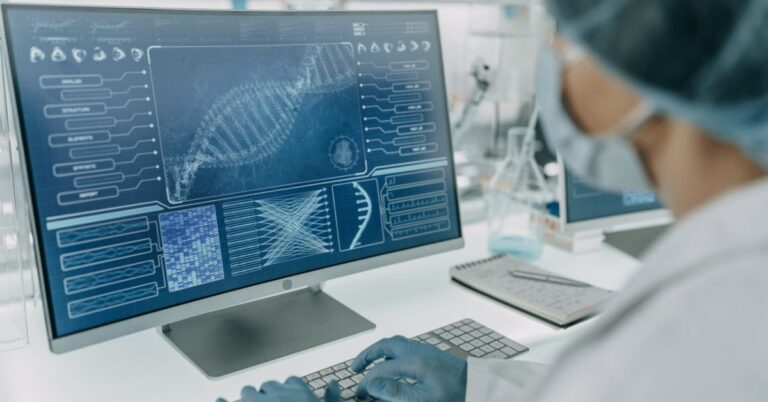Introduction
If you are using FCP, you probably haven’t used a sequence clip reporter. Whether it’s the convenience of generating a music cue sheet or the ability to convert edl files to Excel, this program is an indispensable tool. There are many reasons to use this program, but let’s focus on two of the most common:
Sequence clip Reporter Download
A Producer’s best friend, the Sequence Clip Reporter generates all the reports a Producer needs. This program helps you track clip usage by analyzing music and video. It can even help you create reports for Filters, Markers, and transitions. These reports are then export to an Excel spreadsheet. The software can import XML exports and format the data in a few seconds. It is compatible with OS X 10.7 Lion and later.
Unlike other video editing software, the Sequence Clip Reporter can analyze projects with just one sequence, bin clips, or video and audio tracks. This software works with all three and even analyzes bin clips and video and audio tracks. This makes it an excellent tool for filmmakers who have a variety of different projects. You can analyze video and audio tracks simultaneously, and find out which one is causing the most problems. Once you’ve found the cause of the problems, you can fix it by deleting the problem or adding a solution.
Edl ease
If you’re a producer, you probably want to learn more about EDL Ease for Sequence Clip Reporter. It is a powerful tool that will automatically generate reports that show how many clips and music you’ve used throughout your video project. With just a few clicks, you’ll get a fully formatted Excel spreadsheet that you can use to analyze how your clips and music are being used in your project. The program works with both OS X 10.7 Lion and later.
First, download the latest version of Rev and access the EDL export format. Once you’ve installed the software, you’ll need an account on Rev. To get started, you can use the EDL file to export your video into a different format. Alternatively, you can use the EDL file to export the video to other editing programs. Either way, this program is extremely convenient for those who want to quickly edit a video.
Sequence clip reporter free
A Producer’s best friend, Sequence Clip Reporter makes it easy to create detailed reports about the music and clips used in a project. It lets you track the use of clips, filters, markers and transitions and exports this information as fully formatted Excel spreadsheets. You can also create reports on music cues and music cue sheets, too. The program requires OS X 10.7 Lion or later. To download the Sequence Clip Reporter free, click here.
Convert edl to excel
There are several ways to convert sequence clip reporter EDL files into excel, and each has its own advantages. First, you can convert the EDL into an excel file by reading it as a text file. To do this, select spaces as the delimiter in the file and then choose the corresponding columns and rows. The result will not be a single row for every edit, but multiple rows for each edit. Once you have converted the EDL file, you can open it in an excel spreadsheet or a text-editing application.
Sequence clip reporter alternative
A great way to keep track of music and clip usage is with a sequence clip report. The Sequence Clip Reporter is an application that automatically generates a report from the sequence clips within Premiere Pro. It can also create Markers and Filters, and then converts the information to a fully formatted Excel spreadsheet. The application works by extracting information from an XML file and formats it in seconds. However, the XML format for Premiere Pro is not as clean as that of FCP7.
Edl maker
EDL Maker is an essential tool for producers. It creates a fully formatted Excel spreadsheet of your clip and music usage, along with filter and marker information. This software extracts all this data from the XML export in seconds. The software runs on OS X 10.7 Lion or later. In order to use this program, you must have a Mac and a computer running OS X. Read on to find out more about this program’s features and benefits.

Intelligent Assistance
The new version of the Sequence Clip Reporter is available for Adobe Premiere Pro. This plug-in is a great time-saver for any Producer. It creates comprehensive reports about clip and music usage with Markers, Filters, and more. All of these information are then exported in an easily-processable Excel spreadsheet. In seconds, this tool can produce the final reports that you need. It runs on OS X 10.7 Lion or later.
CC to x
The CC to X sequence clip reporter is a useful tool for reporting clip usage. The program allows you to process multiple types of reports, including music and stock footage requests. It can also be used to generate reports for sequence markers and effects. It can also generate reports at various widths, ranging from 40 pixels to 640 pixels. It also supports a variety of formats, from HTML to Excel. It can process data from clips that have 40 to 640 pixels in width.
The CC to X Sequence Clip Reporter is compatible with both Final Cut Pro and Premiere Pro and lets you export sequence clips to XML format. The XML file can be imported into the software directly, and it also supports drag-and-drop export. For a more comprehensive analysis, you can also use the tool for projects that have a single sequence, only audio, or both video and audio tracks.
How to Use the Sequence Clip Reporter in Final Cut Pro X
Before you can use the sequence clip reporter tool, you need to set up your camera and choose a preset for the video footage. This preset must match the recording device that was used to record the footage. After you’ve set up the preset, you can change its settings at any time by dragging the clips onto the New Item menu in the Project Panel. The software will then adopt the appropriate settings for the clip based on its properties.
Hawaiki Color
The Hawaiki sequence clip reporter is a 3-way color correction plug-in that can be used in a variety of ways. The Hawaiki Keyer plug-in can be applied to the clips in the timeline and displays them in a window or full-screen view, with overlaid controls. This feature allows you to perform grading in a quick clip-to-clip fashion. To make use of this tool, follow the steps below:
First, the Hawaiki Color sequence clip reporter can make use of the inspector effects pane to make adjustments to your footage. The controls are also built into the four corners of the frame, including sliders for overall hue, contrast, sharpening, and blur. There are also three color wheels on the center bottom of the window. These wheels can be rotated to create a specific look for your footage. Once you’ve finished with the preview, click the “Commit Grade” button to save your changes.
The Hawaiki Keyer is a powerful spill suppression tool that offers fine control over the results. Unlike other keyers, the Hawaiki Keyer isolates contaminated foreground areas and replaces the background color with a less offensive one. Furthermore, the Hawaiki Keyer also features an extensive set of view modes. There are many features in this tool, and they are explained below. Once you decide to buy Hawaiki Color sequence clip reporter, you’ll be happy with the result.
SNAP
The SNAP sequence clip reporter has many advantages over fluorescent tags for live cell imaging. Using cell permeable dyes (such as Alexa Fluor 647), SNAP-tag fusion proteins are expressed in cells. In contrast, non-fluorescent SNAP-tags require an expensive functionalized dye for visualization. This also makes it more time-consuming to screen samples with non-fluorescent SNAP-tags.
SNAP is a modified form of a human DNA repair enzyme. When reacted with a fluorophore, it becomes covalently labeled. CLIP is labeled with benzylcytosine conjugates. These two reporter genes are orthogonal, enabling quantitative gene expression studies in C. difficile cells. The reporter can be used for identifying gene expression patterns and studying subcellular protein localization.
Another dye used for live-cell imaging is Oregon Green. New England Biolabs’ functionalized version of this dye allows the use of five to ten microM concentrations without exogenous reducing agents. Because Oregon Green is naturally present in living cells, it does not require oxygen scavenging systems, which can interfere with specimen physiology. Oxygen scavenging systems are still necessary for optimal results, but are not necessary.
CLIP
The Sequence Clip Reporter is the Producer’s best friend. It generates music and clip usage reports, with filters and markers, in a fully formatted Excel spreadsheet. It extracts information from the XML export of your Sequence and formats it in just a few seconds. The best part is that it works with any version of OS X, including Lion, Mojave, and Sierra. You’ll be glad you have it, and you’ll use it every day.
The Reporter Box is targeted at near-live clip production. It allows you to record interview questions and answers. It includes a script and prompting area. The Reporter Box also allows you to prepare your story with texts. It supports RTF formatting, so that you can mark text paragraphs as text clips in the clipboard. Once the text clip is ready, you can drag it to the Playhead and insert it. Sequence Clip Reporter supports all common timeline formats, including ProRes.
Reporter Box
The Sequence clip reporter box is a Producer’s best friend, creating a fully formatted Excel spreadsheet of all your music and clip usage. It is able to extract information from XML exports of your project and formats them in seconds. It requires OS X 10.7 Lion or later. The sequence board automatically scrolls during production. Drag and drop the components to the desired position in the production timeline. If you need to copy or paste a clip, use the drag and drop feature to copy and paste the desired content to another track.
Change List CC
The new release of Intelligent Assistance’s Change List CC for sequence clip reporter makes it possible to retain previously completed work by post audio and VFX teams and update to the current version of the program. This new feature also has a more accurate path for updating sequences, so users can keep existing work without losing the integrity of the project. This is particularly helpful for people who work with a variety of projects involving many clips.
If you’re looking for a simple way to analyze a project’s audio and video clips, Sequence Clip Reporter is an excellent choice. The application allows you to analyze both video and audio tracks in a single project, and you can save the results to XML files for further analysis. To do this, simply drag and drop the files into Sequence Clip Reporter. If you’re not sure what to select, try importing a video project using Final Cut Pro’s own built-in import and export features.






